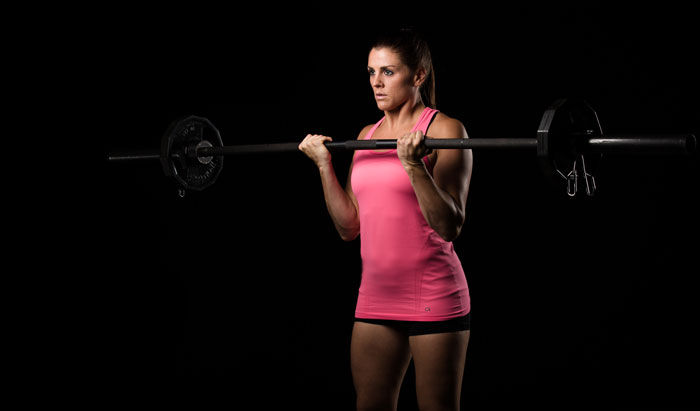
Lack of time is the most common reason for not working out, which is why it’s no surprise that 20- to 30-minute express workouts have become so popular. Everyone wants to get more done in less time. While you may be speeding things up with high-intensity interval training (HIIT), you might also consider slowing things down with super-slow weight training. Both of these workouts can produce amazing results.
Super-slow Weight Training
Super-slow training is a high-intensity workout without the high-intensity speed of HIIT. Each exercise moves through the eccentric/concentric (pushing/pulling) muscle contraction phases for 10-15 seconds. At the crossover of each move, the final phase of extension or flexion is held for two to three counts and repetitions are kept low, six to eight, before moving on to the next exercise.
For example, when performing squats with a bar, start with the bar balanced across the chest, parallel to the floor. Slowly lower into a squat for 10 counts. Then hold two to three counts at the bottom of the squat position (hips slightly above the knees). Slowly lift back to a standing position for 10 counts. Repeat this exercise six to eight times.
High-intensity Interval Training (HIIT)
Boot camp, Tabata and CrossFit are examples of high-intensity interval training programs. These workouts include traditional strength moves alternated with cardio components that feature large muscle-group movements like lunges, squats, burpees and jumping jacks to push the heart rate to 65 to 85 percent of maximum. Functional and total-body moves are common in this type of workout, as opposed to the isolated body-training movements utilized in super-slow training programs.
Most HIIT workouts provide a higher calorie burn than traditional cardio workouts, but also vary based on style and length of intervals (work-to-rest). In Tabata workouts, for example, each exercise is performed for 20 seconds followed by a 20-second rest period, and the exercise is repeated for eight sets. These workouts may include six to eight exercises like burpees that target the entire body. To perform a burpee, start in standing position, bend forward and place hands on the ground. Jump the feet back into a plank position and then jump back to a low squat before standing tall and jumping with arms up to finish the movement.
Is it Just About Calorie Burn?
When you compare the two workouts side by side, in terms of calories burned for the 20- to 30-minute period, it is likely you can burn more calories during a HIIT workout than for a super-slow weight training workout.
Super-slow Weight Training: 200 calories per 20-minute workout
High-intensity Interval Training: 200 to 270 calories per 20-minute workout
But is calorie burn the most important consideration? You must also look at injury risk and the potential for muscle development and lean body-mass changes to determine which workout is the best option for your individual goals. If you’re trying to lose weight, a good argument can be made for either of these workouts. While you may burn more calories during the HIIT workout, you may increase your overall calorie-burning potential through the lean muscle gains that come from super-slow weight training. Training super slow can also improve your overall strength due to greater muscle-fiber recruitment, according to Dr. Len Kravitz of the University of New Mexico.
The bottom line? The calorie-burning potential of HIIT combined with the increased muscle mass that comes from super-slow training makes the two formats a formidable duo. In fact, you’ll benefit the most when you alternate these two styles of workouts into your program rather than perform only one.




 by
by 








